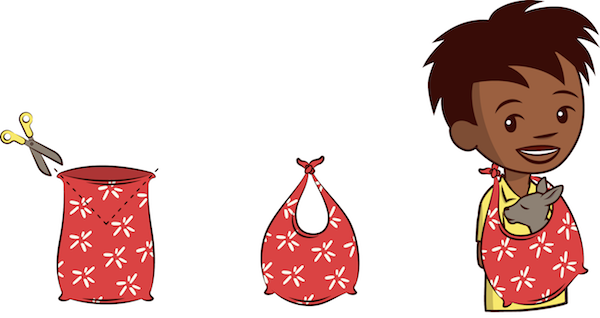Hopalong: FOUNDATION - HPE - Explore
When B-Boy comes to stay overnight, Little J becomes envious of the attention he is getting from everyone. Out walking on Country, Nanna, Little J, Big Cuz and B-Boy find an injured joey. Uncle Mick, a Search and Rescue officer, tells them how to care for the joey that they name ‘Hopalong’. The children feed and look after Hopalong until Mick finds him a place in a wildlife shelter.
Explore - Identify actions that promote health, safety and wellbeing
Theme - LIVING THINGS
As a class, revisit Little J’s story within episode 7, ‘Hopalong’, and ask students to recall what type of animal Hopalong was and how and why he got lost from his ‘mob’.
As a class, explore and identify the 20 baby Australian animals in the image gallery listed below and read the captions together:
Have students pose questions about the animals so that the class can share the information they know about each animal. Either working individually or in pairs, assign one animal species to each student and have students find an image of the parent animal. Print or copy both and match them in a display.
Invite students to identify the similarities and differences between what the baby animal looks like compared to its parent. Have students consider why the differences occur.
Ask students to cooperatively build a game called, ‘Who do I belong to?’
Use the images of the baby animals and the parent animals as the basis of this ‘matching’ game.
Create and play a version of the guessing game, ‘Guess Who?’ using clues about the features of the animals the class identifies. Students listen to the features of an animal and guess which animal it is, e.g., ‘I’m round and furry. I lived in a pouch when I was little but I live in a burrow now.’ (wombat).
Have students explain if there are any clues in the images to help deduce which animal they are. Use the following resources to enhance identification/matching skills:
Animal care
Using craft materials, have students design and make their own models of baby animals encountered in the previous activity. Students can use soft materials such as socks and felt, or cardboard boxes for sturdy animals like the wombat, modelling clay and other materials.
Label all the ‘animals’ and place them in a ‘baby animal creche’. Students can take animals out and ‘care’ for them at times. The students might want to make model feeding bottles or bring in leaves and grasses to feed their babies. Encourage students to tell stories about their animals.
Optional activity
If you can gather old pillowcases, students can make pouches for marsupial babies and carry around their models (or a stuffed animals). Here is a simple way to make a pouch like the one Nanna made in the episode:

Suggested resources:
